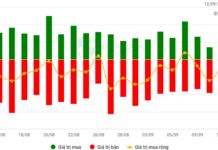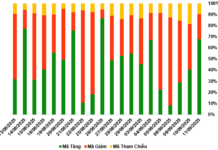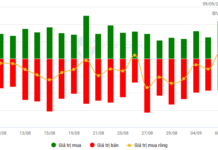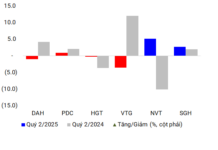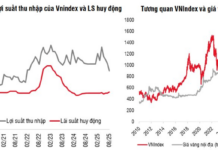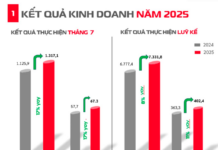Fraud Trends Impacting Financial Institutions in 2024: AI, Synthetic Identities, and Evolving Scams
Financial institutions and organizations face multiple angles to the challenge of mitigating risk as fraudsters find new ways to perpetrate scams. This includes deploying multi-layered fraud prevention solutions, combining both technology and human elements to create a comprehensive and adaptable security system.

Key Findings:
An Experian survey found that 70% of businesses reported fraud losses increasing in recent years, and over half of consumers feel more targeted by fraud than they did a year ago. APP/P2P transaction-based fraud is the most prevalent, accounting for 41% of total attacks. Criminals favor it for its speed, difficulty in tracking, and challenges in recovering funds. While consumers want to feel safe, they also want convenience and dislike overly aggressive security measures. Half (51%) of consumers who opened an account in the past six months considered abandoning the process. Generative AI is poised to be a major fraud driver in 2024, making it easier for fraudsters to orchestrate and launch sophisticated attacks autonomously.
Macroeconomic Factors Fueling Fraud Trends: Fraud trends are often influenced by overall economic conditions, particularly during periods of economic instability or downturn. According to Experian, one of the leading sources of information on credit and fraud, criminals often seek to capitalize on financially distressed consumers. Even as GDP grows, concerns about interest rates, inflation, and the ability to pay off student loans continue to weigh on people’s minds.
Consumer Fraud Concerns: Consumer concerns about fraud continue to rise, with 64% of consumers now saying they are extremely or somewhat concerned about online security. Experian notes that increased media coverage has heightened awareness of fraud across all age groups. The top four consumer fraud concerns include identity theft, credit card information theft, online privacy, and phishing scams. Security concerns tend to increase with age, with the youngest age group (18-24) being the least concerned about security and the oldest age group (55-69) being the most concerned. Identity theft was the top concern, with 85% of those in the (55-69) age group expressing concern.
Are Businesses Prepared? While fraud continues to rise, businesses may not be fully prepared. Three-quarters of businesses surveyed expressed confidence in their ability to protect against all forms of fraud. However, less than half (45%) said they fully understand the impact fraud has on their business.
Types of Fraud: Businesses in the U.S. continue to be impacted by several types of fraud, with APP/P2P fraud (41%) being the most common. This includes transaction-based fraud and real-time payments made through platforms like Zelle, Venmo, and CashPay. These platforms are often valuable targets for fraudsters because transactions are quick and difficult to track or recover.
With the increasing popularity of app-based payments and the ability to “pay anyone instantly” digitally, Experian believes APP/P2P fraud will continue to rise in the coming years. Other prevalent types of fraud include transaction payment fraud (38%) and account takeover fraud (33%).

While beneficial as an emerging technology, Generative AI has also become an enabler for fraudsters, particularly by making it more accessible for DIY fraudsters. (Illustrative photo)
Fraud Predictions for Banking
Experian has been making these predictions for several years now. In 2023, some common themes include fake boss texts, fake job postings and phishing scams, “Frankenstein” shoppers, social media shopping scams, and P2P payment issues. This year is expected to bring a mix of tried-and-true fraud tactics along with some new ones.
The Dangers of Generative AI: While beneficial as an emerging technology, Generative AI has also become an enabler for fraudsters, particularly by making it more accessible for DIY fraudsters. Experian predicts a rapid increase in the use of Generative AI to perpetrate fraud using deepfake content across email, voice, and video. In a recent case, criminals orchestrated a deepfake video meeting with executives to swindle $25 million from a financial institution.
Experian believes criminals will also use Generative AI to create code to set up fraudulent websites and maintain online attacks. With stolen identities, fraudsters can also create fake social media profiles that then interact with real-looking consumer profiles. This could significantly increase the number of phishing attacks in the coming year.
Branches Making a Comeback: While consumers have rapidly shifted to digital lending solutions, many still seek in-person experiences when opening new accounts or seeking financial advice. This is partly because some perceive the in-person experience as more secure and a way to mitigate online security risks. However, even with in-branch identity verification, there is still room for human error or oversight.
A separate Experian report showed that 85% of consumers said physical biometrics are the most secure and reliable authentication method. However, less than a third (32%) of businesses use biometrics to detect and protect against fraud. Experian predicts that lenders will introduce more digital identity verification steps, such as physical biometrics, at branches for in-person account openings to protect legitimate customers and minimize losses.
The Rise of Synthetic Identity Fraud: While many fraudsters created synthetic identities during the pandemic, they soon found easier ways to steal money through various relief programs. However, the identities they created now have a history of a few years, making it easier to evade detection. Fraudsters may return to using these dormant accounts to steal money in the coming year and create new identities using AI. As such, businesses will need to work closely with their fraud prevention partners to review their current portfolio for synthetic identity accounts.
Scammers Expand into Investment Scams: Malicious actors are now increasingly seeking new methods to elicit an emotional response from victims. Some are preying on social causes, GoFundMe campaigns, and investment opportunities with high-pressure appeals and generous incentives to get access to consumers’ personal information.
How Businesses and Banks Can Respond
One approach the report recommends: To protect customers, financial institutions and organizations should consider layering fraud prevention solutions to “fight AI with AI.” Since there is no “silver bullet” solution to prevent or stop all types of fraud, organizations should bring them all together in a layered platform.
Companies can also improve their security posture through organizational alignment, focusing on data and analytics, streamlining platforms and technology, and customer experience.

